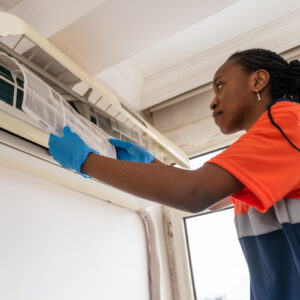Maintaining pavements in optimal condition is one of the most persistent challenges in modern road infrastructure management. As traffic volumes increase and climate conditions become more unpredictable, the need for cost-effective, long-lasting pavement preservation strategies has never been greater. Among the most widely used and proven maintenance techniques are joint sealing and crack sealing, both designed to protect pavement systems by preventing water, debris, and chemical contaminants from entering the structural layers of the road. When applied strategically, these techniques extend pavement service life, delay costly rehabilitation, and enhance roadway safety for motorists and pedestrians alike.
The Role of Joint Sealing in Pavement Longevity
Concrete and asphalt pavements are constructed with intentional joints—planned separations that control cracking caused by temperature fluctuations, load stresses, and material shrinkage. While these joints are necessary, they also represent weak points where deterioration can begin. If left unsealed, joints allow water infiltration, which softens sub-base materials, triggers freeze-thaw cycles in colder climates, and leads to faulting, spalling, or slab movement.
Joint sealing acts as a flexible, waterproof barrier that accommodates pavement expansion and contraction while keeping out moisture and foreign materials. In concrete pavements, unsealed or failed joints are one of the primary factors behind early structural distress. In asphalt pavements, joints between construction lanes or overlays can open over time, creating pathways for water to penetrate underlying layers, eventually leading to rutting, cracking, and potholes.
Crack sealing, on the other hand, addresses unplanned, naturally occurring cracks caused by fatigue, oxidation, or environmental stress. These cracks typically begin at the surface but can quickly propagate downward. Without sealing, even hairline cracks can expand under the combined effects of traffic and weather, eventually compromising the entire pavement structure.
Although joint sealing and crack sealing target different types of pavement openings, the overall objective is the same: prevent deterioration at the earliest stage and preserve pavement function as long as possible.
Sealant Materials and Their Benefits
The performance of a joint or crack sealant is only as good as the material selected. Different environments, traffic loads, and pavement types require tailored solutions.
Commonly used joint sealants include:
| Sealant Type | Key Properties | Typical Use |
|---|---|---|
| Polyurethane | High elasticity, strong adhesion, good chemical resistance | Concrete joints exposed to movement or fuel spill zones |
| Silicone | UV resistant, excellent flexibility, long service life | Longitudinal or transverse concrete joints |
| Asphalt-based (hot-poured) | Cost-effective, strong bond to pavement, reheatable | Asphalt pavements and low-movement joints |
Crack sealing materials often include:
| Sealant Type | Main Advantages |
|---|---|
| Rubberized asphalt | Expands and contracts with temperature, strong adherence |
| Polymer-modified sealants | Improved elasticity, faster curing, superior durability |
The right material selection depends on joint width, climatic conditions, expected movement, and budget. For example, silicone sealants have longer life cycles in hot climates because they resist hardening from oxidation, while rubberized asphalt works exceptionally well in colder regions due to its flexibility.
Joint Sealing Procedure
To ensure maximum performance, joint sealing must follow a structured and controlled process. The key steps generally include:
-
Cleaning the Joint
All debris, dust, old sealant remnants, or vegetation must be removed. Compressed air, wire brushing, or sandblasting is often used to ensure a clean bonding surface. -
Drying
Moisture is one of the most common causes of sealant failure. The joint should be completely dry before sealant application, especially when using hot-applied materials. -
Installing Backer Rod (if required)
For joints wider than approximately 6–12 mm, a backer rod is inserted to regulate sealant depth, reduce material waste, and allow the sealant to expand and contract properly. -
Applying the Sealant
Depending on material type, sealants are applied using heated kettles, mechanical pumps, or manual applicators. Proper overbanding techniques ensure full adhesion and a smooth surface transition. -
Finishing and Curing
Sealant should be tooled or leveled if required and allowed to cure before reopening the road to traffic.
Crack Sealing vs. Crack Filling: A Key Distinction
Although the terms are sometimes used interchangeably, crack sealing and crack filling are not the same:
| Method | Purpose | Sealant Used | Expected Lifespan |
|---|---|---|---|
| Crack Sealing | For working cracks that expand/contract | Flexible, rubberized sealants | 4–8 years (or more with maintenance) |
| Crack Filling | For non-working or low-movement cracks | Stiffer, asphalt-based fillers | ~2–4 years |
Crack sealing is more durable and cost-effective for active cracks, while crack filling is a short-term treatment for non-active openings.
Advantages of Combined Sealing Methods
Using joint sealing and crack sealing together offers several long-term benefits:
-
Prevents Water Damage
Moisture is the most destructive element in pavement systems. A well-sealed pavement surface keeps water out and preserves base layers. -
Reduces Life-Cycle Costs
Proactive sealing is significantly cheaper than resurfacing or reconstruction. For every $1 spent on sealing, agencies can save $4–$10 in future repairs. -
Improves Road Safety
Sealed pavements are smoother and safer, reducing tripping hazards, hydroplaning risk, and vehicle suspension wear. -
Extends Pavement Life
Properly sealed joints and cracks can add 5–10 years of service life, delaying major rehabilitation.
Tips for Effective Sealing
To maximize pavement preservation results, several best practices should be followed:
-
Apply sealants only in dry, moderate-temperature conditions (typically 5°C to 35°C).
-
Inspect pavements at least twice per year to detect early cracking.
-
Avoid applying sealants to dirty or damp surfaces.
-
Use compatible materials—do not mix sealant types without adhesion testing.
-
Restrict traffic until sealants have cooled or cured fully to prevent pull-out or tracking.
-
Schedule sealing before winter or rainy seasons, when freeze-thaw cycles accelerate damage.
The Future of Joint and Crack Sealing
Emerging technologies are transforming pavement maintenance, including:
-
Self-healing sealants that reactivate under heat
-
Pre-compressed foam sealants for high-movement joints
-
Robotic and automated application equipment to increase accuracy and safety
-
Smart sensors embedded near joints to detect moisture intrusion
Sustainability is also becoming a major focus. Recycled polymers and bio-based sealants are being tested as greener alternatives to petroleum-based products.
Conclusion
Joint sealing is a vital component of pavement management, acting as the first line of defense against water infiltration, structural weakening, and premature failure. When paired with crack sealing, the combined strategy addresses both planned joints and naturally occurring cracks, protecting the entire pavement surface from top to bottom. Using proper techniques, selecting the right sealants, and performing regular inspections allow transportation agencies, contractors, and municipalities to dramatically extend pavement service life while keeping long-term maintenance costs under control.
For any road network—whether highways, urban streets, or airport runways—joint and crack sealing remain indispensable tools in modern pavement preservation. As materials and technology continue to evolve, these techniques will only become more efficient, more adaptable, and more essential to building durable, resilient infrastructure.


